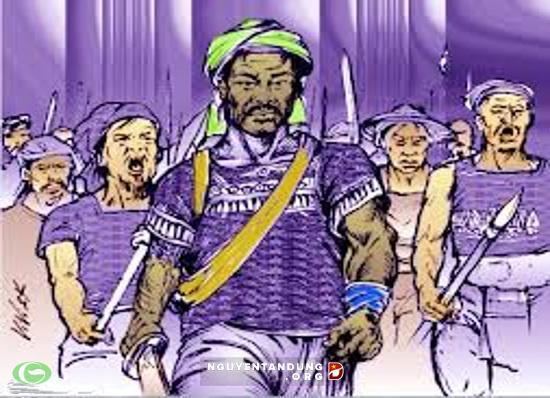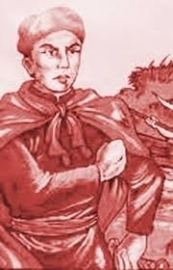Reign 713 - 722 Predecessor Hau Ly Nam De | Successor Phung Hung Name Mai Loan | |
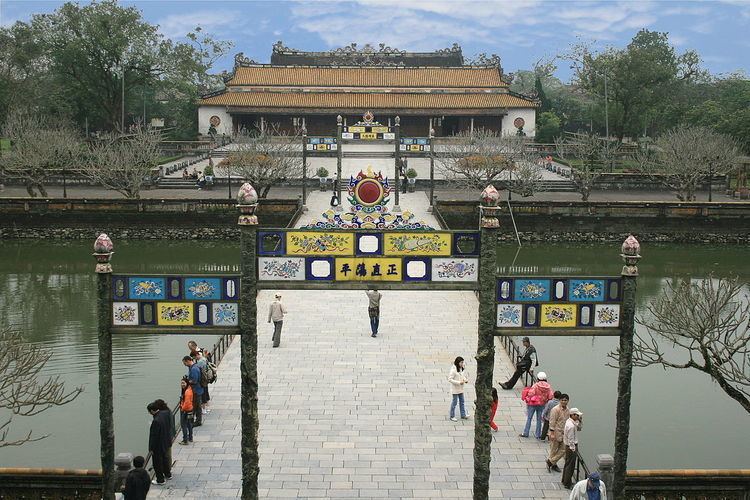 | ||
Died 723Nghe An, Protectorate General to Pacify the South | ||
Bánh trôi nước-Loser-Bang bang bang A1-K17 TTHPT Mai Thúc Loan
Mai Thúc Loan (or Mai Huyền Thành (梅玄成), titled Mai Hắc Đế (梅黑帝, literally Mai the Black Emperor), was the Vietnamese leader of the 722 uprising against the rule of the Tang dynasty in the region of Hoan and Ái provinces (now Thanh Hóa and Nghệ An of Vietnam). Regarded as one of the major rebellions of Vietnamese people during the Third Chinese domination, the uprising of Mai Thúc Loan succeeded in capturing the capital Tống Bình (now Hanoi) of the Tang protectorate and Mai Thúc Loan thus became Mai Hắc Đế, the emperor of the independent region for a short time before being put down by the military campaign after the order of the Emperor Xuanzong of Tang. Today Mai Thúc Loan is praised as one of the early national heroes in the history of Vietnam who contributed for the struggle for independence of the country.
Contents
- Bnh tri nc Loser Bang bang bang A1 K17 TTHPT Mai Thc Loan
- T hoa tr ch o n k ch mai th c loan bi u di n nsut an
- Background
- Uprising
- Legacy
- References
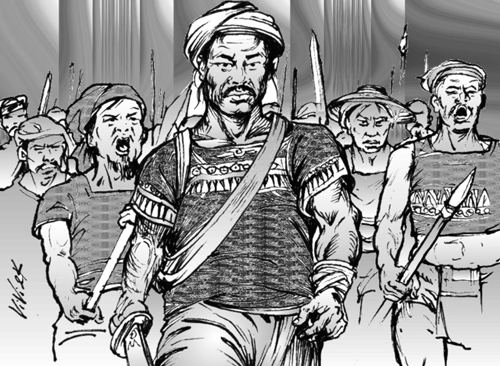
T hoa tr ch o n k ch mai th c loan bi u di n nsut an
Background
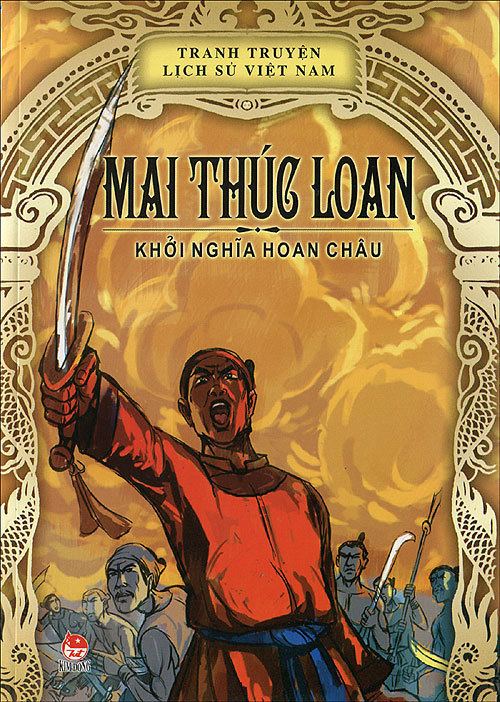
According to Từ điển Bách khoa toàn thư Việt Nam, the date of birth of Mai Thúc Loan was unknown but he was from the Mai Phụ village, now Thạch Hà District, Hà Tĩnh. In the Basic Records of the New Book of Tang, his name was Mai Thúc Loan while in the Old Book of Tang the name was recorded as Mai Huyền Thành and the one in the Zizhi Tongjian was Mai Thúc Yên.
Uprising
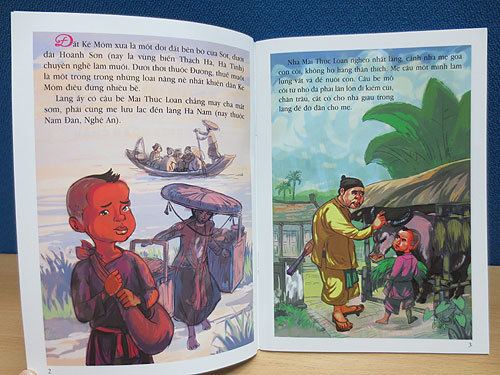
In 722, Mai Thúc Loan appealed Vietnamese laborers for an uprising against the rule of the Tang dynasty. Mai Thúc Loan's army of laborers was quickly followed by people of the Hoan and Ái provinces (now Thanh Hóa and Nghệ An of Vietnam). Based on the mountainous and bushy region of Sa Nam – Rú Đụn near the Lam River, the uprising united with forces from Champa and Chân Lạp in fighting against the Chinese troops of the Tang Dynasty and eventually succeeded in occupying both Hoan and Ái provinces. After the insurgent army took down the capital Tống Bình (now Hanoi) and forced the Tang governor Guang Suo Ge to flee to China, Mai Thúc Loan was proclaimed the emperor of the independent region, he was called Mai Hắc Đế (Mai the Black Emperor) and decided to establish his new capital in the citadel of Vạn An (now Nghệ An) with stronghold and palaces. According to Khâm định Việt sử Thông giám cương mục, the title Black Emperor originated from his distinctively dark skin colour. At the end of 722, Emperor Xuanzong of Tang ordered his generals with about 10,000 soldiers to put down the rebellion of Mai Thúc Loan. Could not stand the overwhelming opponent, Mai Thúc Loan was defeated, took refuge in the mountains and subsequently died in 723, thus ended the uprising.
The traditional record about Mai Thúc Loan's uprising in historical books of Vietnamese dynasties was brief, for example the Đại Việt sử ký toàn thư of Ngô Sĩ Liên only acknowledged that there was a rebellion led by the rebel leader Mai Thúc Loan in 722 with the said army of 30,000 soldiers with allies from Champa, Lâm Ấp and that the rebellion was quickly pacified by Tang troops. In Khâm định Việt sử Thông giám cương mục, the total number of Mai Thúc Loan's forces was 40,000 but the compilers of the book expressed their doubt about this number and thought that it might be made by Tang generals who wanted to emphasize their victory over the uprising with the Emperor Xuanzong. While Đại Việt sử ký and Đại Việt sử ký toàn thư only regarded Mai Thúc Loan as a rebel (giặc) of the Tang authority, Ngô Thì Sĩ in Đại Việt sử ký tiền biên, compiled during the Tây Sơn dynasty, praised the uprising as a symbol of the independent spirit of Vietnamese people and thus criticized Lê Văn Hưu and Ngô Sĩ Liên for misjudging the real value of Mai Thúc Loan's rebellion.
Legacy
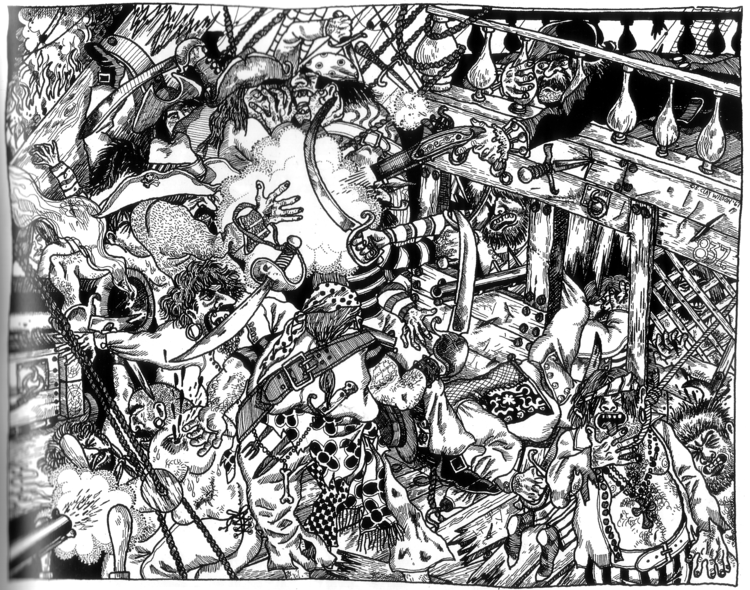
Today Mai Thúc Loan is appreciated as one of the early national heroes in the history of Vietnam who contributed for the struggle for independence of the country. In the site of his ancient citadel of Vạn An, people erected a temple to worship Mai Thúc Loan and he was considered being equal with other Vietnamese emperors although his rule was short-lived and he was not officially called an emperor of Vietnam in dynastic historical books. According to folk legend, Mai Thúc Loan had a daughter named Mai Thị Cầu and a son named Mai Kỳ Sơn who followed their father in fighting against the Tang Dynasty, today there still remains a shrine to worship Mai Thị Cầu and Mai Kỳ Sơn in Haiphong where people hold an annual festival in the third lunar month to celebrate the deeds of Mai Thúc Loan's children. A street of Hanoi and several places in Vietnam are named in honour of Mai Thúc Loan.
